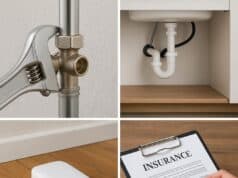Key Takeaways
- Early detection through regular inspections can save significant repair costs.
- Properly disposing of waste helps prevent avoidable sewer blockages.
- Your landscaping choices may directly impact sewer line integrity.
- Recognizing signs of trouble allows you to act quickly and protect your property.
Introduction
Maintaining your home’s plumbing system starts with prioritizing the health of your sewer lines. Sewer issues not only threaten property value but also pose risks to health and safety. Many homeowners find that regular upkeep and awareness can prevent emergencies and unexpected expenses. For those living in busy urban environments, finding reliable sewer repair services in Los Angeles can ensure timely intervention before minor issues escalate.
This guide emphasizes the importance of homeowners investing in prevention to extend the lifespan of their sewer system and avoid disruptions. It suggests routine inspections, smart disposal habits, landscaping knowledge, and early warning signs for home safety.
Understanding Common Sewer Line Issues
Sewer line issues arise from internal and external pressures, including blockages from everyday materials like grease, hair, and soap scum; tree root intrusions from mature trees; and pipe deterioration and leaks from older materials. Blockages can cause slow drainage and backups, while tree root intrusions can expand gaps and restrict water flow. Pipe deterioration and leaks can compromise water efficiency, damage foundations, and promote soil instability. Maintaining sewer lines is crucial for property, local public health, and water quality, as stated by the U.S. Environmental Protection Agency.
Regular Inspections and Maintenance
Annual or biannual sewer inspections are a powerful tool for prevention. Plumbers often use specialized cameras to survey your sewer lines internally, spotting blockages, root intrusions, or emerging cracks long before you notice symptoms. By scheduling regular drain cleanings and flushing your lines with water, you reduce the buildup of materials that could cause major headaches later. Preventive maintenance serves as an affordable insurance policy against future damage.
Proper Waste Disposal Practices
What you put down your drains determines the long-term health of your sewer system. Flushing items like diapers, wipes, dental floss, or grease often leads to clogs and costly repairs. Even so-called “flushable” items rarely disintegrate as intended and should be disposed of in the trash. Educate everyone in your household on proper disposal to keep your pipes flowing freely and minimize emergency callouts.
Landscaping Considerations
The placement and type of vegetation around your property can directly impact your sewer lines. Before planting trees or large shrubs, research their root behavior and avoid varieties known for aggressive growth. Aim to plant major root systems at least 10-15 feet away from your sewer lateral. Regularly trimming and monitoring established trees prevents roots from exploiting weaknesses in pipes.
Recognizing Signs of Sewer Line Problems
Catching sewer issues early can prevent widespread property damage and mitigate repair expenses. The most common red flags include:
- Slow Drains: Sinks, tubs, or toilets that drain sluggishly across multiple fixtures often signal a sewer line blockage, not just a single drain problem.
- Foul Odors: Persistent sewage smells indoors or around your exterior property suggest a leak or backup, letting gases escape.
- Backups: Recurring toilet or floor drain backups are a clear sign that wastewater can’t travel freely to the city sewer or septic tank, possibly due to pipe damage or deep blockages.
When to Seek Professional Help
Homeowners should address sewer line symptoms like repeated clogs, visible sewage backup, or sudden changes in their yard to prevent foundation damage, mold growth, and repair costs. If severe problems arise, contact a trusted plumber with experience to diagnose and resolve complex issues. Staying proactive is key to sewer line longevity, including scheduling regular inspections, practicing mindful disposal, monitoring landscaping, and recognizing early warning signs. Contact a sewer specialist when in doubt to prevent problems from escalating out of control.









